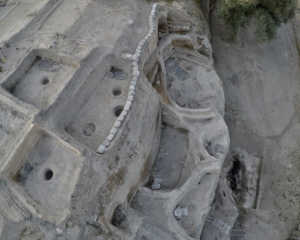
PROCEEDINGS OF THE NATIONAL ACADEMY OF SCIENCES—A study* finds multiple phases of sheep and goat domestication in a Neolithic settlement in Central Anatolia, Turkey. Southwest Asia is thought to be the site of sheep and goat domestication in the early Holocene epoch, but the methods and precise locations of domestication are unclear. Mary C. Stiner and colleagues analyzed the age and sex structures of goat and sheep remains in the zooarchaeological record of Aşıklı Höyük in Central Anatolia, Turkey. The Aşıklı Höyük Neolithic site spans around 1,000 years of continuous occupation beginning around 8400 BC, corresponding to the beginning of settled life in the region. The authors found that sheep and goat management and domestication proceeded through three phases. In the first phase, residents seasonally captured wild lambs and kids from surrounding highlands and raised them within the settlement prior to slaughter. In the second phase, residents carried out limited breeding within the settlement while continuing to recruit wild infants. The third phase displays evidence of large-scale herding with a reproductively viable captive population and a herding economy that harvested adult animals, in contrast to subsequent Neolithic practices. Transition between phases was gradual, but domestication likely altered labor organization, settlement layout, and waste accumulation in Aşıklı Höyük. According to the authors, the results suggest that sheep and goat domestication at this site was a local rather than an imported development.
________________________________

View of the architectural sequence at Aşıklı Höyük as revealed on the western side of the mound, spanning an interval of 1000 years (8400 to 7350 cal BC) in which sheep and goats became domesticated. Mihriban Özbaşaran.
________________________________

View of the architectural sequence at Aşıklı Höyük as revealed on the western side of the mound, spanning an interval of 1000 years (8400 to 7350 cal BC) in which sheep and goats became domesticated. Mihriban Özbaşaran.
________________________________
Article Source: PNAS news release
*“An endemic pathway to sheep and goat domestication at Aşıklı Höyük (Central Anatolia, Turkey),” by Mary C. Stiner, Natalie D. Munro, Hijlke Buitenhuis, Güneş Duru, and Mihriban Özbaşaran. Proceedings of the National Academy of Sciences.
https://www.pnas.org/cgi/doi/10.1073/pnas.2110930119
Advertisement



